Few things are more disheartening than approaching your kale plants, only to find yellow, wilted leaves or unsightly lesions. Just like any other plant, kale is vulnerable to factors that can impact its health. So, why is your kale dying? Let’s find out.
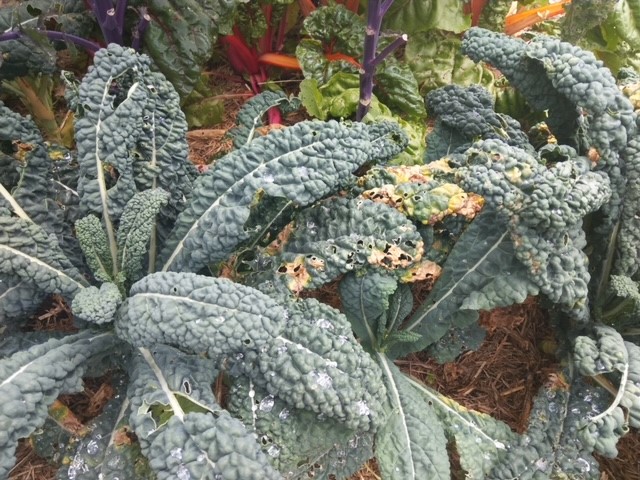
Table of Contents
Why Is My Kale Dying?
The most common reasons your kale is dying are watering issues, too much or too little sunlight, soil conditions, extreme heat, certain pests, and diseases.
Read on to find out why your kale is dying, and how to fix it so you can once again harvest delicious leafy greens!
Related: Growing Kale: Planting, Caring, and Harvesting Kale | Kale Seedlings Turning Yellow? Causes and Solutions
1. Watering Issues
One of the most common reasons behind dying kale has to do with watering issues. Kale can fall victim to two common but contrasting watering woes: overwatering and underwatering.
Achieving the right balance of moisture is crucial for the health of your kale plants. Too much or too little water will cause your kale to die.
Overwatering
Kale is a plant that needs lots of water, as such, it is easy to give your kale a little bit too much. Overwatering occurs when the soil remains consistently wet due to excessive watering or poor drainage.
If your kale plant is dying due to overwatering, the leaves will begin to wilt, turn yellow, and die. When your kale has been overwatered, its roots become waterlogged and can develop root rot, where the roots turn to black mush. When this happens, the roots can no longer take up the water, nutrients, and minerals that are vital to your plant’s growth.
It is important to remember that overwatering may not be caused by your watering schedule, but could be due to poor draining soil. If your garden has experienced a few days of heavy rain, and your soil is not draining correctly, your kale will become overwatered.
You can check soil drainage by digging a shallow hole and filling it with water. If the water is still there after a few days, your soil has a drainage problem.
How to Fix it: If you think your kale has been overwatered, you can check the soil moisture by placing your finger a few inches into the soil. If the soil feels wet then your kale is dying due to overwatering.
Firstly, you need to stop watering your kale and allow the soil time to dry out. Once the soil is somewhat dry, you should water your kale 2-3 times a week, giving it at least 1.5 to 2 inches of water over that time.
Underwatering
Underwatering occurs when kale plants do not receive sufficient water to meet their needs. Underwatering causes stress and hinders growth, and its symptoms are similar to overwatering.
Just as with overwatering, when your kale is not getting enough water, it will begin to wilt. This can make it a bit confusing when you are trying to figure out what is killing your kale!
If your kale plant does not receive enough water, it will start to drop its lower leaves. Your kale leaves will start to turn brown, and curl at the edges. The leaves will begin to look dry, and the whole plant will begin to wilt, and die.
How to Fix it: The first thing to do if your kale is showing signs of being under-watered is to give it a good soaking. Next, you can apply a layer of mulch around your kale plants to help the soil retain moisture.
Your watering schedule is climate dependent and so if your garden has been experiencing hotter-than-usual weather, you will need to water your kale more frequently.
2. Too Much or Too Little Sunlight
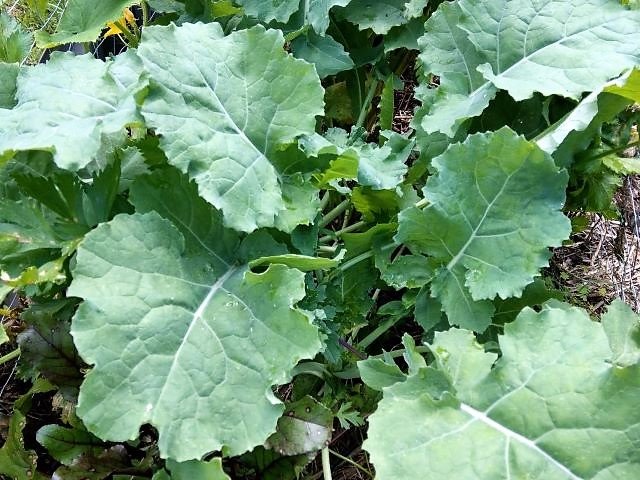
Sunlight is a critical factor in the growth and development of kale plants. Providing the right amount of sunlight is essential for photosynthesis, which fuels the plant’s energy production and overall health. Both too much and too little sunlight can have detrimental effects on kale.
Too much sunlight can lead to sunburn and heat stress, causing damage to kale plants’ delicate tissues and hindering their growth. If your kale plant is getting too much sunlight, you will notice brown edges on the leaves, stunted growth, yellowing on the leaves, and wilting.
Too little sunlight deprives kale plants of the energy needed for photosynthesis, leading to weak growth and poor nutrient production. A sure sign that your kale plant is not getting enough sunlight, is that it will become leggy. This means that your plant may grow tall in its attempt to find sunlight.
Just as when your plant gets too much sun, if it is not getting enough, its growth may be stunted. In addition, the leaves might become pale green or yellowish due to reduced chlorophyll production.
How to Fix it: Kale plants need a minimum of 6 hours of direct sunlight per day. If your plant is getting more than that, you may notice signs of stress. If your kale plant is getting too much sun, you can cover it with a shade cloth after 6 hours of sunlight.
If your plant is not getting enough sunlight, you can fix it by trimming back any overhanging trees or plants that could cause shade.
If this is not possible, you can dig up the kale plant very carefully (without damaging the roots) and transplant it into a sunnier spot in the garden. Be sure to water the newly planted kale well and protect it with mulch. Moving established plants does come with a small risk they won’t survive, however, if the event your kale plant is dying anyway due to lack of sunlight, it’s worth the risk to try and save the plant.
3. Soil Conditions
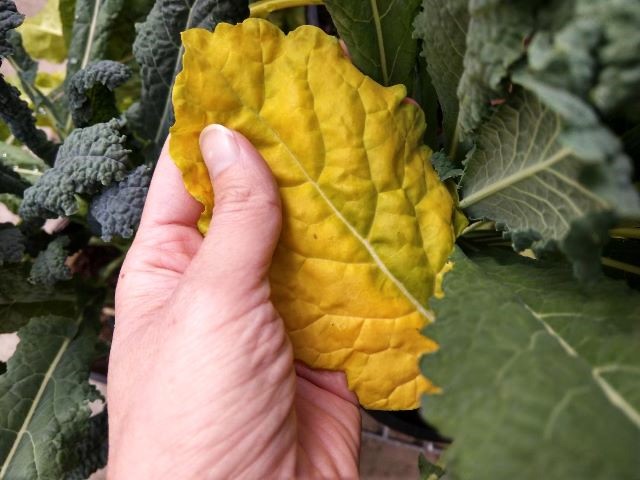
The health of your kale plants is intricately linked to the quality of the soil they’re rooted in. Soil provides the necessary nutrients, structure, and support for growth. However, incorrect soil conditions can lead to a host of issues that can affect your kale’s overall well-being.
Inadequate soil quality can lead to nutrient deficiencies, poor drainage, and hindered root development. All of these can cause your kale to die.
The pH level of your soil is a crucial component of your soil conditions. The pH level of soil plays a critical role in plant health because it directly affects the availability of essential nutrients to plants.
If the pH level is incorrect, your kale will begin to show signs of a nutrient deficiency and will have wilting and yellowing leaves. Kale prefers a pH level between 6.0 and 7. You can run into problems with a higher or lower balance.
Different soil types have distinct properties, such as drainage, water-holding capacity, nutrient availability, and texture. Kale, like any other plant, has specific preferences for soil conditions.
Kale does well in loamy, well-draining soil that is enriched with organic matter. If the soil conditions are not correct, your kale will not thrive and its growth will be stunted.
How to Fix it: To fix the soil conditions there are a few things you can do. Firstly, you need to check your soil’s pH balance. This can be done easily by using a soil testing kit.
If your soil is too acidic, meaning its level is below 6.0, you can add garden lime. If it is too alkaline (above 7), you can add more organic matter such as aged animal manure and compost (my preferred method), or you can add sulfur or soil acidifier.
If your soil has too much clay or is not well-draining, you can correct this by adding organic compost.
4. Extreme Heat
Another reason your kale is dying could be due to your garden experiencing extremely hot temperatures. Kale likes cooler temperatures ranging between 60-70°F (15-21°C). If your garden experiences temperatures reaching higher than 75°F (24°C) your kale may begin to show signs of heat stress.
Heat stress can disrupt photosynthesis, meaning your plant is unable to get the energy it needs to grow. Additionally, extreme heat causes the soil around your kale plant to dry out faster, leaving your plant thirsty and unable to take up the nutrients it needs from the soil.
If your kale is dying due to heat stress, your kale will start to wilt, the tips of the leaves will curl and turn brown, and the leaves will turn yellow.
How to Fix it: There are several steps you can take to stop your plant from experiencing the negative effects of high temperatures. The first solution is to provide shade for your kale during the hottest part of the day. You can do this easily by covering it with a shade cloth.
The second thing you need to do during a heat wave is to make sure your kale is well watered. I like to check my plants daily when the temperatures are stifling. The soil should be damp when you check it, if it is dry, you will need to water your kale.
5. Pests
Kale is no stranger to pest infestations. Pests can be a persistent threat to kale plants, causing damage that ranges from cosmetic issues to severe decline and death. Cabbage aphids in particular pose the greatest threat to your kale.
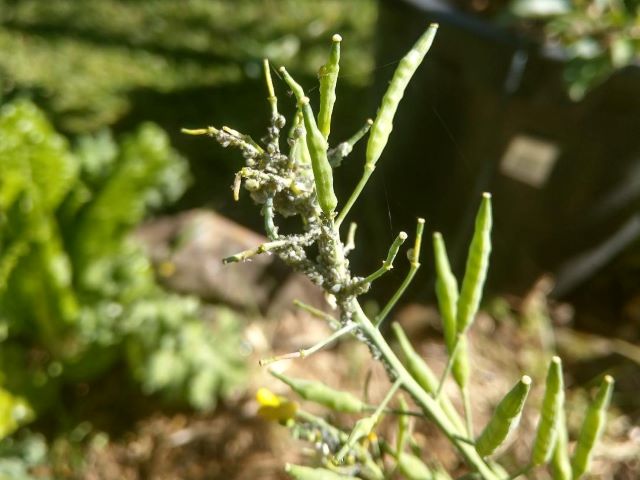
Cabbage aphids are small, soft-bodied insects that feed on the Brassica family of plants including kale. They are usually grayish-white or green in appearance but can come in other colors too. And they like to hang out in large groups on the stems and underside of your kale plant’s leaves.
If your kale has cabbage aphids feasting on it, its growth will be stunted, the leaves will be yellow and misshapen and your plant could eventually die.
How to Fix it: Luckily, cabbage aphids can be dealt with in the same manner as other aphids, using items you already have in your house. When you spot the aphids, the first thing to do is give your kale a good spray of water with the garden hose.
Once you have dislodged the cabbage aphids, you can spray your kale with a soapy solution to remove any remaining aphids. Mix 1 tablespoon of dishwashing liquid, into 1 quart (1 liter) of water. Then simply apply the spray once every 2-3 days for 2 weeks and then continue to apply it once a week to keep these pests at bay. You can also use an already mixed solution of insecticidal soap.
6. Diseases
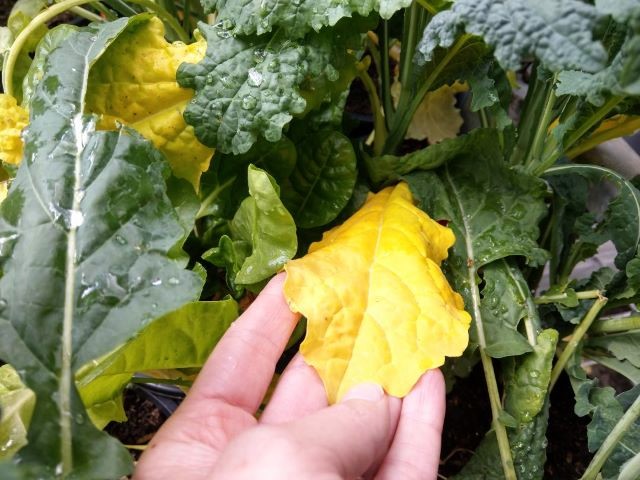
Kale can fall victim to various diseases that range from minor to more serious problems. Two diseases that are deadly to kale are Alternaria leaf spot and black rot.
Alternaria leaf spot
Alternaria leaf spot, caused by the fungal pathogen Alternaria brassicicola, is a common disease that affects kale and other brassica crops. This fungal disease makes its presence known through the appearance of small darkly colored spots, which turn gray or brown, on the kale leaves.
After the appearance of the spots, over time, the center of the lesions will begin to crack and brown lesions will appear on the stems of your kale.
How to Fix it: The way to fix Alternaria leaf spots is through the application of copper fungicide. You will need to apply the organic fungicide every 7 to 10 days to get the disease under control. You can also use a sulfur-based fungicide, which I have found works well to keep the disease at bay after it has been cleared up with a copper fungicide.
Black Rot
Black rot, caused by the bacterium Xanthomonas campestris pv. campestris is a destructive disease that can severely impact kale and other cruciferous vegetables. This bacterial infection can lead to rapid kale plant decline and death if not effectively managed.
The first symptoms of this bacterial disease are V-shaped brown spots that start at the edge of your kale leaves. Next, the leaf stems will turn black, and fall from the plant.
How to Fix it: Black rot can be treated in the same way as Alternaria leaf spot, by using a copper fungicide. Additionally, you will need to manage weed species from the cruciferous family that could potentially harbor bacteria.
Related:
